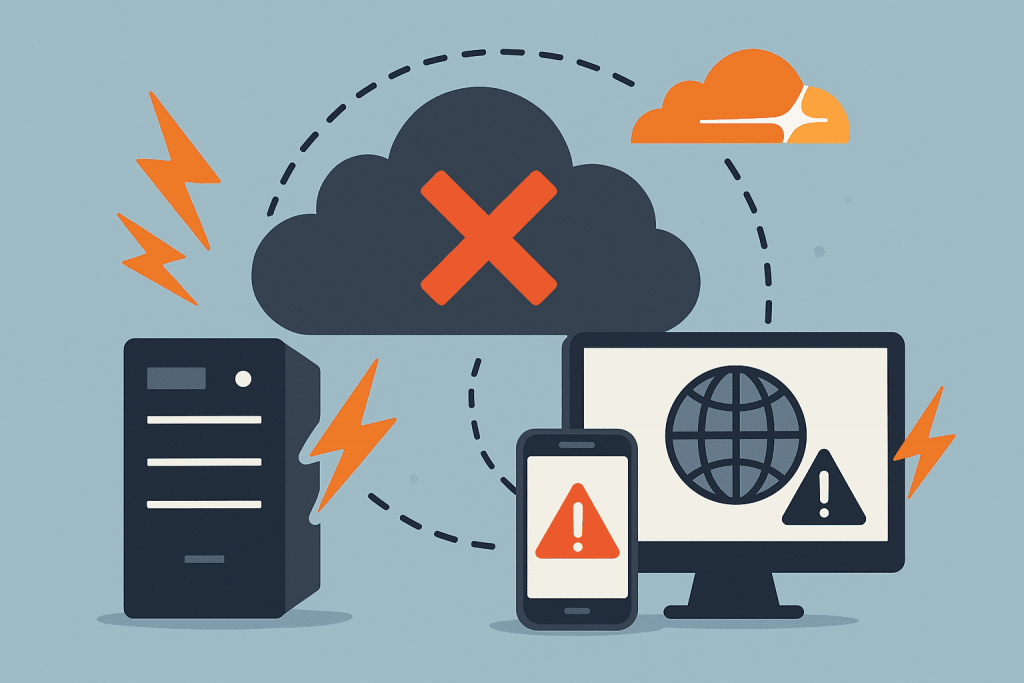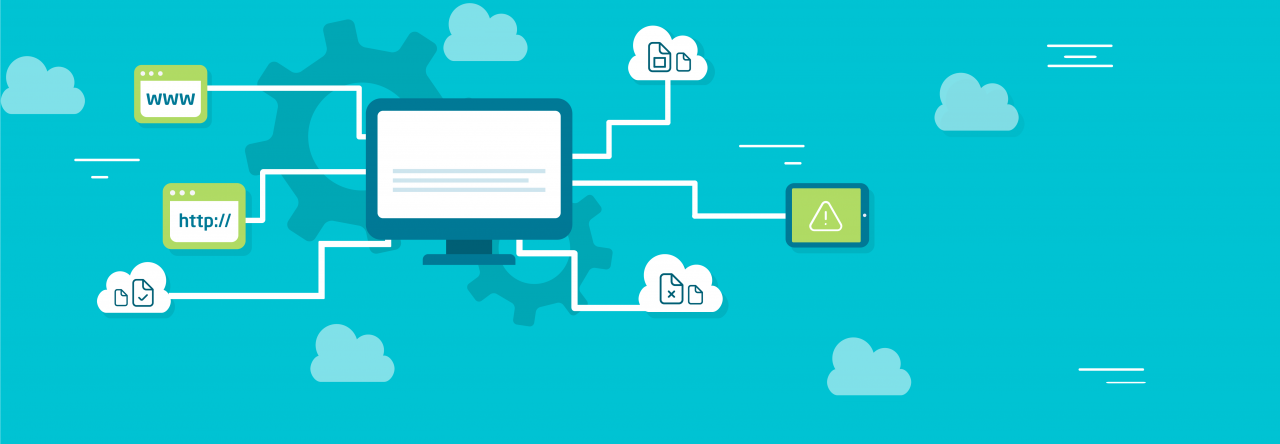
When a small website goes down, it’s a problem only for its owner. But when Cloudflare, one of the largest infrastructure service providers on the internet, goes down, the problem becomes global. The latest outage once again demonstrated that the modern internet depends on Cloudflare far more than it may seem at first glance. Tens of thousands of websites stop loading, some applications behave unpredictably, and even major international platforms fall into digital “darkness.” This is not just a technical incident — it is a reason to reevaluate your architecture and understand how the internet works today.
What Cloudflare Is and Why It Has Become a Central Element of the Internet
Cloudflare is a global network that accelerates, protects, and stabilizes website operations worldwide. They have over 300 data centers that process trillions of requests every day. Put simply, a huge portion of internet traffic flows through Cloudflare: from static images and fonts to complex APIs and corporate platforms.
The company operates in several directions, each of which creates critical dependency for websites:
DNS — the system responsible for converting a domain name into an IP address. Cloudflare DNS is one of the most popular in the world.
CDN — a content delivery network that ensures fast website loading worldwide, regardless of where the server is located.
WAF — a web application firewall that protects websites from attacks.
DDoS protection — the world’s largest system that absorbs malicious botnet traffic.
Proxy network — an intermediate layer between the user and the server, improving stability, optimizing routes, and enhancing security.
The consequence is simple: when Cloudflare works — the internet is stable. When Cloudflare goes down — a large part of the internet freezes.
According to various estimates, Cloudflare is used by 20% to 30% of all websites in the world, including major media, SaaS platforms, online stores, banking services, and mobile applications. In fact, any user, without even realizing it, opens dozens of websites daily that operate through Cloudflare. And that is why a single outage has such a massive impact.
Why One Outage Pauses Half of the Internet
When a local website goes down, its owner deals only with their own problems. But in the case of Cloudflare, an outage means that millions of routes, DNS queries, and proxied connections “collapse” simultaneously. Since many websites use the same access points for caching, security, and content delivery, any error in this system triggers a “chain reaction.”
The internet stopped being a decentralized network of enthusiasts long ago — it has become an ecosystem where a few companies act as “central hubs.” Cloudflare is one of them. And dependence on it continues to grow.
How to Reduce Dependence on Cloudflare: What You Can Do Right Now
The incident served as a reminder: even the most stable services cannot guarantee absolute uptime. Therefore, website owners should think about their infrastructure in advance.
Strategies that help reduce dependence:
Backup DNS provider.
If DNS is managed solely through Cloudflare, your site simply “disappears” for all users during an outage. Adding a second DNS provider can ensure availability even during failures.
Failover CDN or multi-CDN.
Many companies use multiple CDNs that automatically switch between each other. This is more complex to configure, but it greatly increases reliability.
Ability to operate without a proxy.
If your site has a direct access mode (for example, via a separate domain or subdomain), it can remain available even if the global network has issues.
Local server cache.
At least some pages should load even without external services. This allows users to access information during incidents.
Backup monitoring points.
Since part of the logs also pass through Cloudflare, an outage stops analytics as well. A backup monitoring system is a must-have.
None of these strategies are perfect, but all of them help ensure that websites do not completely “go down” during a global outage.
Which Services Can Substitute Cloudflare
Fully replacing Cloudflare is difficult because it combines dozens of different products: DNS, CDN, WAF, SSL optimization, load balancers, caching, DDoS protection, routing optimization, edge functions, and even the serverless platform Workers.
However, alternatives exist, and for some tasks they can be just as effective.
Akamai
One of the oldest and most powerful CDN providers. Its strengths are stability, scale, and enterprise orientation. Frequently used by major media and streaming services.
Fastly
Focused on speed and offering a powerful edge platform. Fastly is one of Cloudflare’s main competitors in content delivery speed.
Amazon CloudFront
A CDN from AWS with a global infrastructure. Suitable for companies already working with AWS.
Google Cloud CDN
A strong option for products hosted in Google Cloud. Easily integrates into the GCP infrastructure.
OVH DNS / Hetzner DNS / AWS Route 53
Popular alternative DNS providers that allow you to build a backup in case Cloudflare fails.
Imperva
A major player in WAF and security, aimed at enterprise clients.
None of these services is a “perfect replacement” for Cloudflare, but together they can form a flexible, multi-layered infrastructure that does not rely on a single provider.
The Internet Needs Diversification
We are used to Cloudflare always working flawlessly, so an outage feels shocking. But in reality, the incident became a valuable lesson: the more centralized the internet becomes, the more vulnerable it is to single points of failure. Websites that rely on a single provider share its fate the moment an outage occurs.
Rethinking your infrastructure is a way to make your project more resilient. Even small steps toward diversification help reduce risks and ensure availability for users in any situation. And although Cloudflare remains a powerful and reliable player, independence will always be a value worth defending in advance.

Leave a Reply